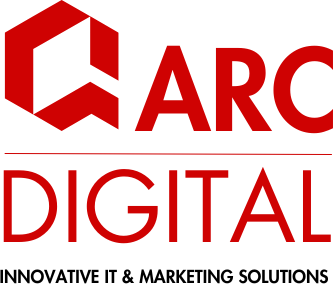Digital marketing is a dynamic puzzle that marketers are relentlessly trying to solve. Trying to figure out and understanding the latest trends, the newest apps and social platforms, and matching up with their evolution require a 100 percent dedication on its own.

The following are learnings and tips to follow while using digital marketing in the market research space:
- Identify your audience!
As market researchers and marketers, one of your main jobs is to understand your audience. When you understand your audience, that is when they can see right through a common message that you post all over the internet. In case you are thinking of how to get a clear understanding of your audience, keeping the below practices in mind is crucial.
- Ensure you segment your audience: It doesn’t matter if it is email, display ads, or social media, most advertising channels make provisions for some sort of audience segmentation. This could be segmentation by job title and industry. When this is done, it ensures you are able to send the exact content to the exact people at the exact time.
- Ensure you always modify your message: When sending a message to your target audience, make sure you are as specific as possible. While communicating with a consumer insights person in personal care goods (PCG), make sure the ad created to serve this purpose connects with such individual, relevant, by making sure it’s relevant to them, instead of a general message or something meant totally out of their line, let’s say Telecommunication or Finance.
III. Know the level of awareness that surrounds your brand and be honest about it: Segmentation ensures this is possible. Ensure you find out if this is an entirely new audience or the one that knows one or two things about your business. When you must have considered all of this, it will tell you how high or comprehensive you should go with your messaging. Ensure you test your messaging and note a few things about it. It could be keywords, length, or other things, all you just have to do is, try various approaches until you get the appropriate one to use.
You can test your message simply by following these tips:
- Come up with objectives going into the tests. These include what exactly you want to learn, test, and most importantly how to measure success.
- Begin with split tests: You can test different messages with the same subject amongst the same audiences to find out the message they connect with- strike a chord the most. Moving forward, you can as well take it further by testing the same message with different audiences to understand how each group responds.
- Test across all the platforms available to you: It is important to note this, “the way people engage on various platforms differs,” so ensure you test a variety of assets, calls to action and messaging on every available platform. The result should guide and inform you about the contents that are relevant to those channels.
- Track conversions
Ensure you create a time to come up with conversion tracking, to have a clearer or better understanding of what pushes your audience to convert (click, submit a form, and follow other instructions). This approach helps you to improve your campaigns based on conversion and maximize your budget by not including those who have already converted. With the help of a conversion tracking, you can track what a user does after they click on/engage with your ad, which makes it possible for you to see or know if they actually purchased a product, signed up for your newsletter, or make the purpose of the ad comes into actualization.
The following are some key examples of how these tips can be applied to specific marketing channels and tactics:
- Segment your audience based on how they behave on your website: It doesn’t matter if it is via URL, event, or number of pages visited, you have to be aware of whatever actions every individual takes on your site. When you have an idea of all these, it enables you to provide them with creative that matches their behavior.
- Set up conversion tracking to omit those who have already converted: Conversion tracking makes it possible for you to upload lists of people who have already completed your call to action which could either be to make a purchase, subscribe, or sign up for events. This ensures you don’t waste resources getting someone to convert on the same action on multiple occasions.
- Leverage keywords to reach the right audience: Ensure you narrow your keywords to choose those that are precise to your business, and adopt keywords that reveal buyer intent.
- Social Advertising
- Segment with social media: Social media platforms reveal and say a lot about people. You can as well make use of this to your advantage by connecting with the audience your message will appeal to most. Go ahead, by testing with different audiences to see who eventually appears more engaged with your content, then stick to those learnings and use them to place that content in front of this audience outside of social media.
- Get specific with your messaging: Everybody has entirely different reasons when it comes to what drives them to visit the available social platforms. Knowing this, it is expected that the content on every available platform appears to be different as well. Avoid a cluttered social feed by coming up with appealing copy that is straightforward, relevant, and appropriate for that channel. And don’t forget to align your messaging with your segments.
In conclusion, There are a lot of available ways you can connect with your audience and this will continue to evolve, but if you are seeking for are ways to just get started all you need is to segment, test, and track.






